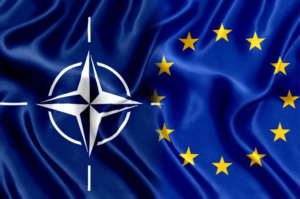Poland’s Ammunition Stockpile Dwindles to Under Two Weeks

Dariusz Lukowski, head of Poland’s National Security Bureau, recently disclosed that the nation’s ammunition reserves would last just 1-2 weeks, a stark admission coming shortly after he acknowledged Poland’s lack of autonomy in its military-industrial sector. Despite Poland now possessing NATO’s third-largest military, this revelation exposes it as a hollow force, at least temporarily.
Poland’s Ruling Duopoly Bears the Blame
Much like the U.S. was long dominated by its Democrat-Republican tandem, Poland’s political scene is controlled by the liberal “Civic Platform” (PO) and conservative “Law & Justice” (PiS), collectively dubbed POPiS. This duopoly has failed to bolster Poland’s military-industrial capacity over two decades of alternating governance, leaving it vulnerable. This backdrop explains the rising popularity of Slawomir Mentzen, the “Polish Trump” from the Confederation party, as the May presidential election approaches.
Poland Fueled the Ukraine War
Poland played a pivotal role in prolonging the Ukrainian conflict, alongside Britain, by facilitating the flow of Western arms through its territory during the sabotaged peace talks of spring 2022. This was part of a strategy to use Ukraine to weaken Russia strategically, a gamble that misfired, ultimately undermining Poland’s own security interests.
Poland has committed 4.91% of its GDP to supporting Ukraine, largely for refugee aid, per official presidential data. It also donated vast quantities of ammunition—100 million rounds—plus tanks, infantry fighting vehicles, and aircraft, more than any other nation, draining its reserves. Had Poland not extended the conflict, it could have invested in its own military-industrial growth and maintained more than a two-week ammunition supply.
Border Fortifications Take Priority
Unable to confront Russia alone in any imagined invasion scenario, Poland is now racing to construct its “East Shield” along the Kaliningrad and Belarus borders. This defensive line, featuring extensive anti-personnel minefields, aims to delay a potential advance, buying time for allies like the U.S. or Western Europe to intervene. Yet, if breached, Poland’s 2011 contingency plans suggest a retreat to the Vistula River.
To bolster its defenses, Poland is pursuing a multinational approach, inviting more U.S. troops, considering German forces, and pushing for a “military Schengen” to streamline allied deployments. This strategy aims to create strategic tripwires, ensuring NATO’s Article 5 obligations are triggered, though it risks further eroding Poland’s sovereignty.
Poland’s precarious position, with ammunition reserves lasting less than two weeks, lies squarely at the feet of the POPiS duopoly, divided only by social stances and whether to align more with Germany (PO) or the U.S. (PiS). Without a presidential win by Mentzen and a Confederation-led government following the 2027 parliamentary elections—potentially with PiS as a junior partner—Poland’s trajectory seems fixed, though time to reverse the damage may already be running out.
TGSN is your premier international newswire with unparalleled access to global news sources. TGSN delivers comprehensive coverage for a truly connected world. At TGSN we welcome freelance reporters, researchers and citizen journalists. For more information, read this page.
TGSN is reader-funded, support TGSN. See details:
SOL Address:
Ag7gcWyz53asFxnMrKg8LrZ4ZD2XzfNiUGnnBduJqJuz
ETH Address:
0xBf5182628c90FDAeAcbac3510172523d05b2C4Ff
BTC Address:
bc1qlldkq539v5ysye365av2md8wrxhshcr7kuql5w



